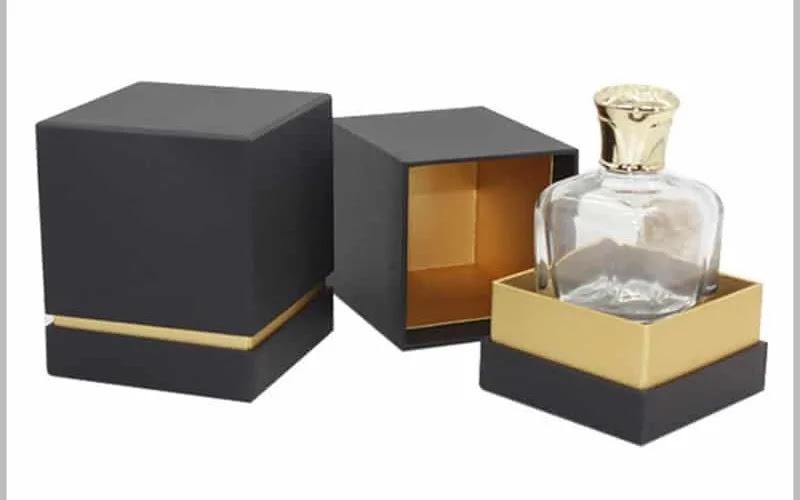U.S. Breast Prosthetics Market Set for Expansion, Expected to Surpass USD 270 Million by 2034
Market Overview
The U.S. breast prosthetic market is on a trajectory of steady and significant growth, projected to increase from USD 122.53 million in 2024 to USD 271.85 million by 2034, advancing at a compound annual growth rate (CAGR) of 8.3% over the forecast period. This upward momentum is fueled by a convergence of medical, technological, and cultural factors, including the rising incidence of breast cancer, greater awareness of reconstructive surgery options, and innovations in prosthetic materials and design.
Breast prosthetics—ranging from external breast forms to implantable solutions—play a vital role in post-mastectomy and post-lumpectomy recovery, offering both functional restoration and psychological support. The market comprises various product categories, such as silicone prostheses, saline-filled implants, and custom-designed external prosthetics. As patient needs become more personalized and diverse, the demand for high-performance, comfortable, and aesthetically appealing prosthetic solutions continues to grow.
Key Market Growth Drivers
1. Rising Breast Cancer Diagnoses
Breast cancer remains the most frequently diagnosed cancer among women in the United States, excluding skin cancer. According to the American Cancer Society, over 280,000 new cases are reported annually, with a significant proportion of patients requiring surgical intervention such as mastectomy. This has directly influenced the demand for breast prosthetics, which help restore body symmetry and provide psychological support during recovery.
2. Technological Advancements in Prosthetics
The development of lightweight, ergonomic, and natural-feeling prostheses has revolutionized the industry. New-generation breast forms incorporate medical-grade silicone, temperature-regulating materials, and breathable fabrics to maximize comfort and minimize skin irritation. Additionally, manufacturers are introducing anatomically accurate designs that better match individual body shapes, encouraging higher user satisfaction and long-term adoption.
3. Increased Awareness and Insurance Coverage
Public health campaigns and initiatives led by non-profit organizations have been instrumental in promoting awareness of mastectomy recovery and reconstructive options. Legislation such as the Women’s Health and Cancer Rights Act (WHCRA) mandates insurance coverage for breast prostheses, making these products more accessible and affordable for a broader population.
4. Growing Demand for Cosmetic and Aesthetic Procedures
Beyond medical necessity, breast prosthetics are increasingly being used for cosmetic enhancements. Societal acceptance of aesthetic surgery and the desire for body image improvement have contributed to growth in elective breast augmentation, further expanding the market scope.
Explore The Complete Comprehensive Report Here:
https://www.polarismarketresearch.com/industry-analysis/us-breast-prosthetic-market
Market Challenges
Despite the encouraging outlook, several obstacles may hinder the market’s full potential:
-
High Cost of Premium Prosthetics
Advanced prosthetics, especially custom-made or silicone-based forms, can be cost-prohibitive for uninsured or underinsured individuals. Although insurance has improved accessibility, affordability remains a concern for some demographics. -
Psychological Barriers and Social Stigma
For some patients, emotional discomfort, body image concerns, or the stigma associated with prosthetics can deter usage. Supportive counseling and patient education are critical in overcoming these challenges. -
Regulatory Hurdles
Stringent approval processes imposed by the U.S. Food and Drug Administration (FDA) can slow down the introduction of innovative devices, increasing time-to-market for breakthrough technologies. -
Emerging Surgical Alternatives
Options such as autologous reconstruction, oncoplastic surgery, and fat grafting offer alternative pathways for breast restoration. These procedures, while complementary in some cases, may reduce reliance on prosthetic solutions.
Regional Insights
Regional adoption of breast prosthetics in the U.S. varies depending on healthcare accessibility, cultural perceptions, and insurance coverage.
-
Northeast
States like New York and Massachusetts exhibit high adoption rates due to well-established cancer care centers, robust insurance penetration, and early access to technological innovation. -
Midwest
A balanced mix of urban and rural populations in states such as Illinois, Ohio, and Michigan has led to steady growth. Outreach programs and nonprofit initiatives are expanding awareness in smaller communities. -
South
Projected to be the fastest-growing region, the South is witnessing a rising breast cancer burden, especially in underserved areas. Improved access to healthcare services and awareness campaigns are driving market expansion. -
West
California and Washington lead in the cosmetic implant segment, reflecting a strong cultural emphasis on body aesthetics. The presence of top plastic surgery centers and biotech firms also fuels growth in reconstructive solutions.
Market Segmentation
By Product Type:
-
Silicone Breast Prostheses
-
Saline Breast Implants
-
External Foam Breast Forms
-
Custom-Made Prosthetics
By End User:
-
Hospitals
-
Ambulatory Surgical Centers
-
Specialty Clinics
-
Homecare Settings
By Distribution Channel:
-
Hospital Pharmacies
-
Online Pharmacies
-
Retail Stores
-
Direct-to-Consumer (DTC) Channels
Competitive Landscape
The U.S. breast prosthetic market is characterized by a diverse mix of established global players and emerging innovators. Key strategies include R&D investments, strategic partnerships with healthcare institutions, and expansion into patient-centric distribution models.
Leading Market Participants:
-
AbbVie (Allergan Aesthetics)
Offers FDA-approved breast implants with a strong focus on biocompatibility, durability, and aesthetic outcomes. -
American Breast Care
A trusted name in post-mastectomy bras and external breast forms, prioritizing comfort, customization, and patient dignity. -
Amoena Medizin-Orthopädie-Technik GmbH
Renowned for its wide range of symmetrical and asymmetrical prosthetic designs, Amoena integrates apparel and care products for holistic recovery. -
Anita Dr. Helbig GmbH
Specializes in post-surgical lingerie and prosthetic undergarments, combining functionality with aesthetic appeal. -
GC Aesthetics
Supplies high-quality silicone gel implants for both reconstructive and cosmetic surgery, serving hospitals and surgical clinics nationwide. -
HansBioMed
Leverages biotechnology to create advanced silicone implants and soft-tissue engineering products with superior biocompatibility. -
Mentor Worldwide LLC (Johnson & Johnson)
A market leader offering a comprehensive portfolio of surgical-grade breast implants, widely used in reconstructive and elective procedures. -
POLYTECH Health & Aesthetics GmbH
Known for implants with anti-capsular contracture coatings, aimed at reducing post-surgical complications and ensuring long-term patient satisfaction. -
SILIMED INDUSTRIA DE IMANTES LTDA
A Brazilian-based company producing silicone-based prosthetics for both aesthetic and therapeutic uses. -
Tiger Aesthetics Medical, LLC
An emerging player focused on ergonomic, lightweight prosthetic solutions designed for greater mobility and comfort. -
Trulife
Offers handcrafted breast forms and an extensive line of orthotic and prosthetic solutions, with a strong commitment to quality craftsmanship. -
Valtris Specialty Chemicals
Provides the specialty polymers and chemical formulations used in the production of high-grade medical silicone and implant components.
Future Outlook
The next decade is expected to usher in a wave of transformation in the U.S. breast prosthetic industry. Key trends likely to shape the market include:
-
Personalized Prosthetics through 3D Printing
Enabling bespoke fit and design for each patient, improving comfort and aesthetic outcomes. -
AI-Driven Surgical Planning and Sizing
Helping surgeons make data-backed decisions for better symmetry and long-term results. -
Development of Smart Prosthetics
Including temperature-adaptive materials and self-healing surfaces to enhance durability and realism. -
Telehealth Integration for Remote Consultations and Fittings
Reducing logistical barriers and expanding access to rural or underserved populations.
Conclusion
The U.S. breast prosthetic market stands at the intersection of medical innovation, patient empowerment, and aesthetic transformation. Supported by increasing breast cancer diagnoses, favorable legislation, and rapid advances in prosthetic technology, the market is poised for long-term expansion.
As stakeholders continue to focus on inclusive, dignified, and technologically advanced care solutions, the industry will play a vital role in enhancing recovery journeys and quality of life for thousands of individuals across the nation.
More Trending Latest Reports By Polaris Market Research:
Ambulatory Blood Pressure Monitoring Devices Market
5G Fixed Wireless Access (FWA) Market
Interleukin-6 (IL-6) Inhibitors Market
Sustainable Manufacturing Market
Assisted Reproductive Technology Market
Drilling Fluids And Chemicals Market
Drilling Fluids And Chemicals Market
Interleukin-6 (IL-6) Inhibitors Market
Dental Bone Graft Substitutes Market
5G Fixed Wireless Access (FWA) Market
Magnetic Resonance Imaging Market
Chemical Vapor Deposition Market








